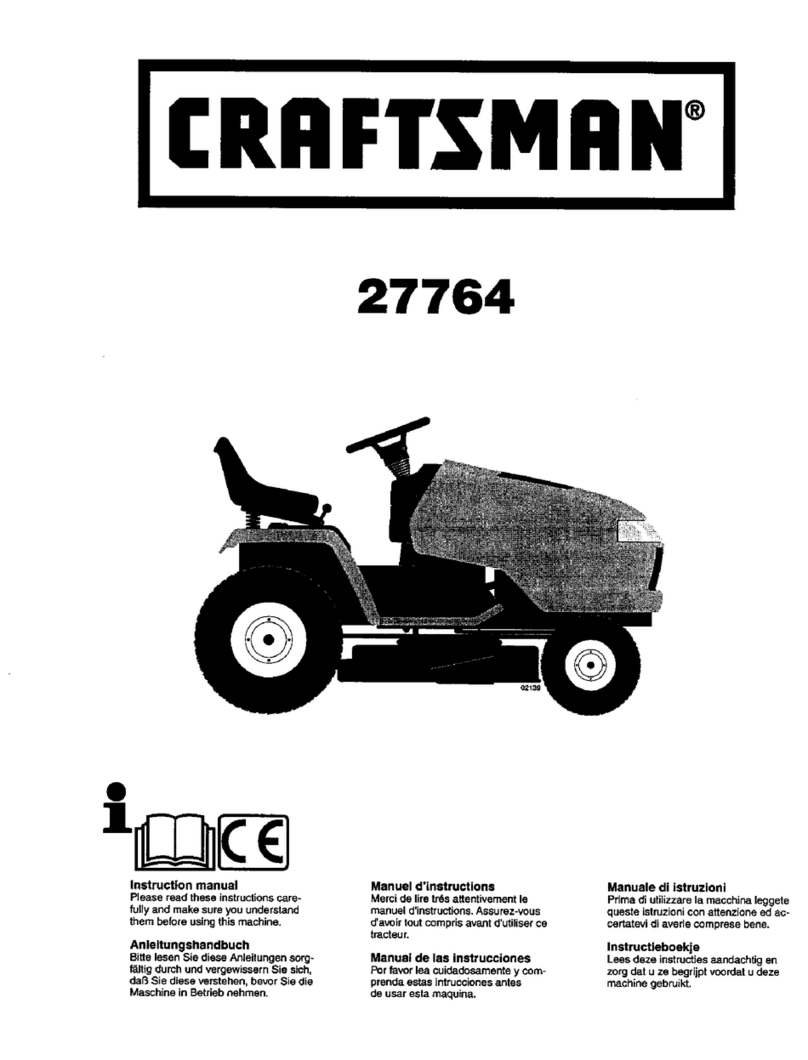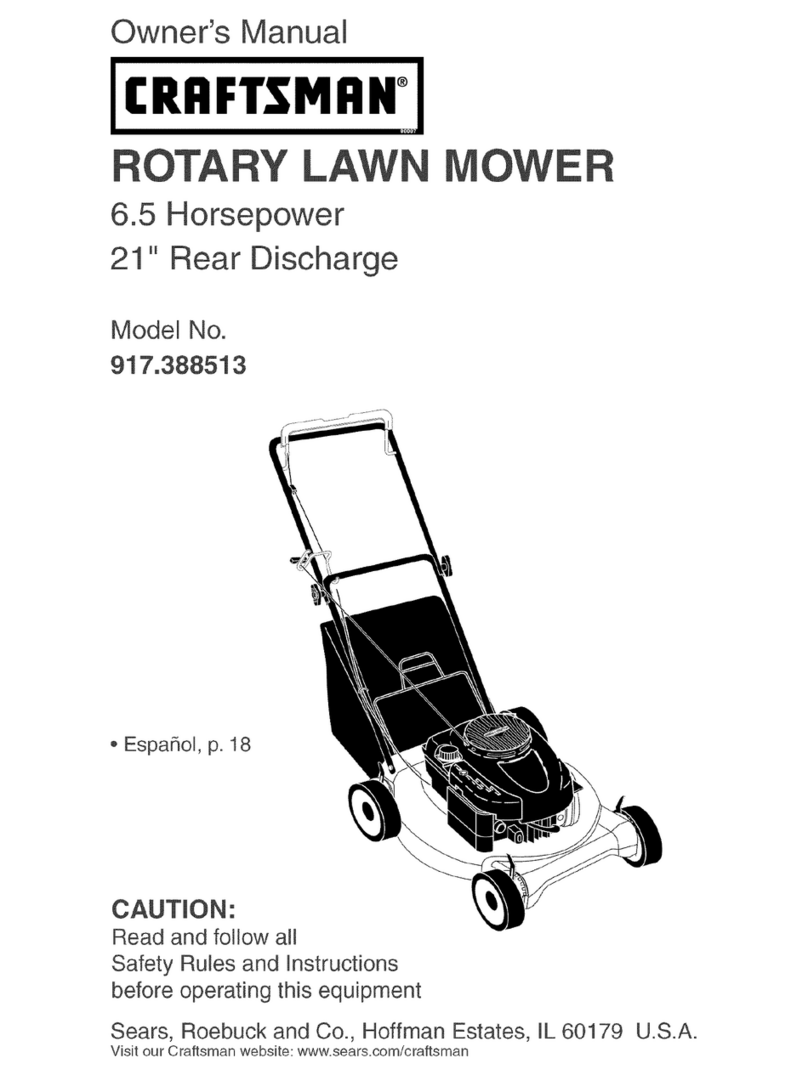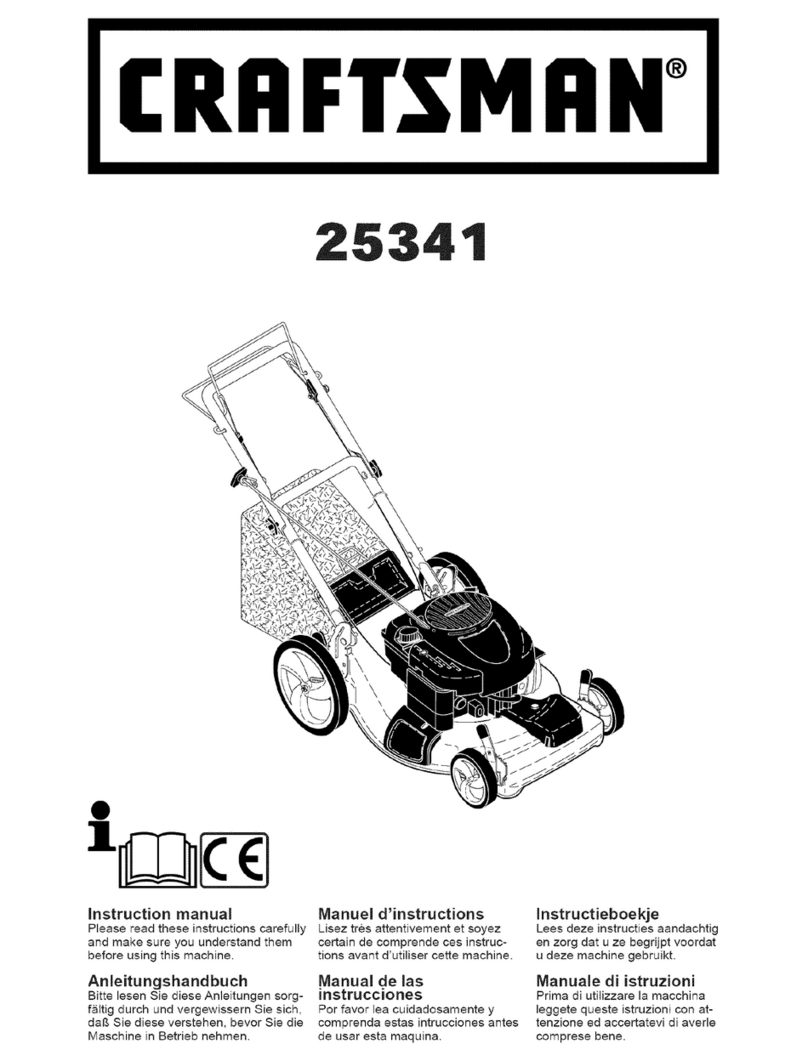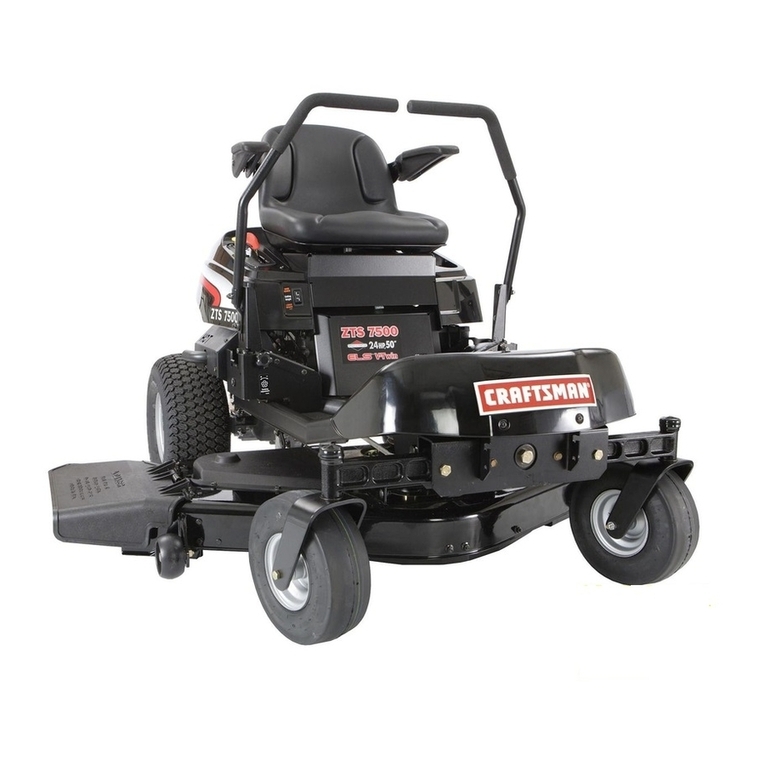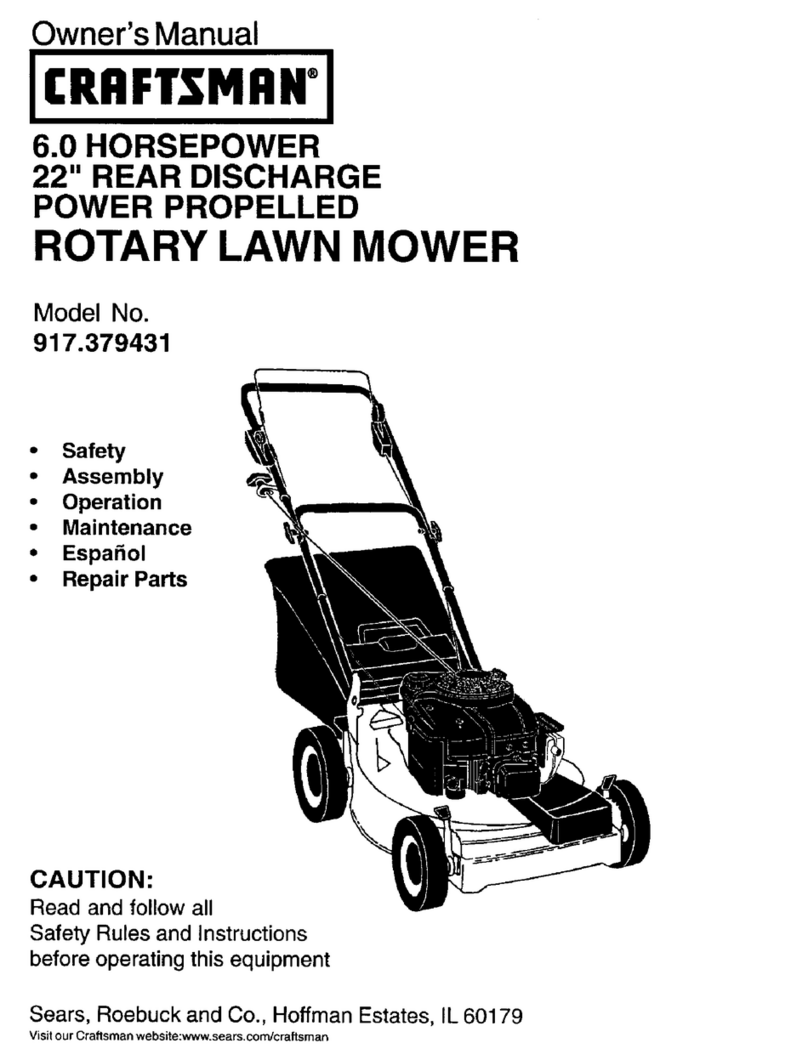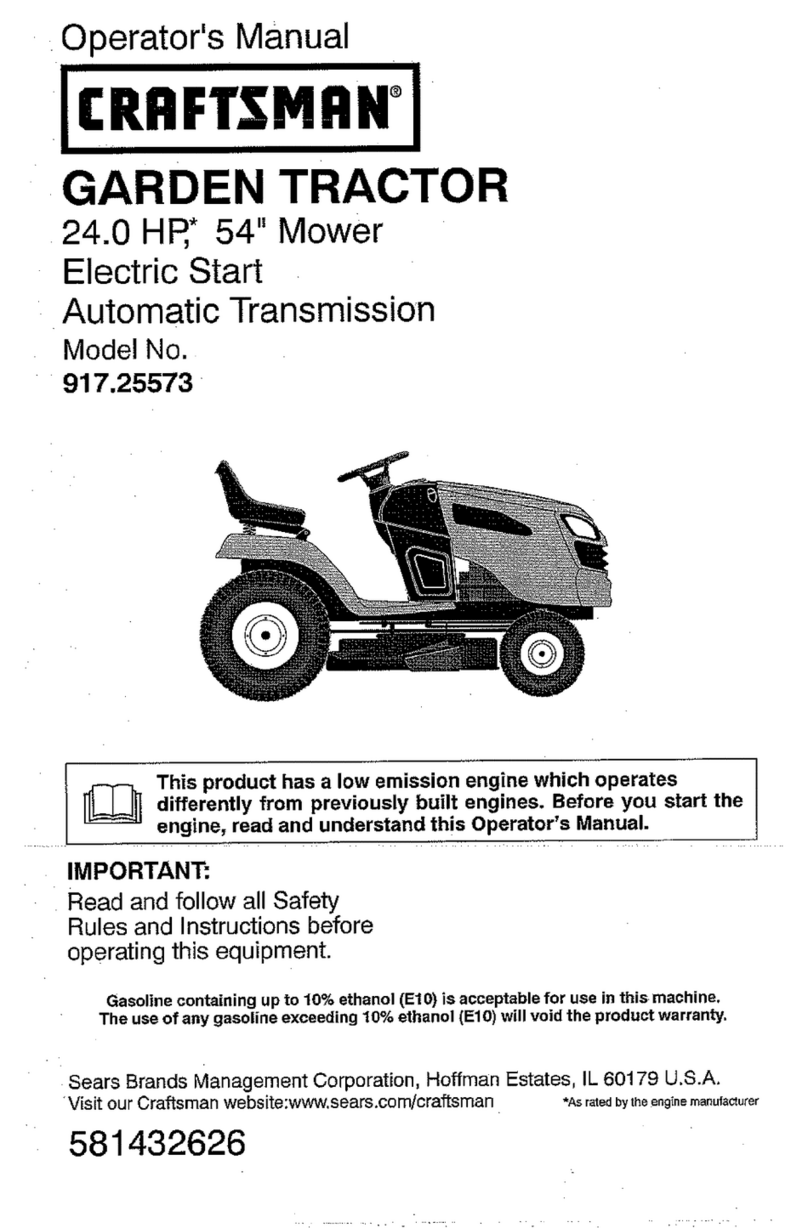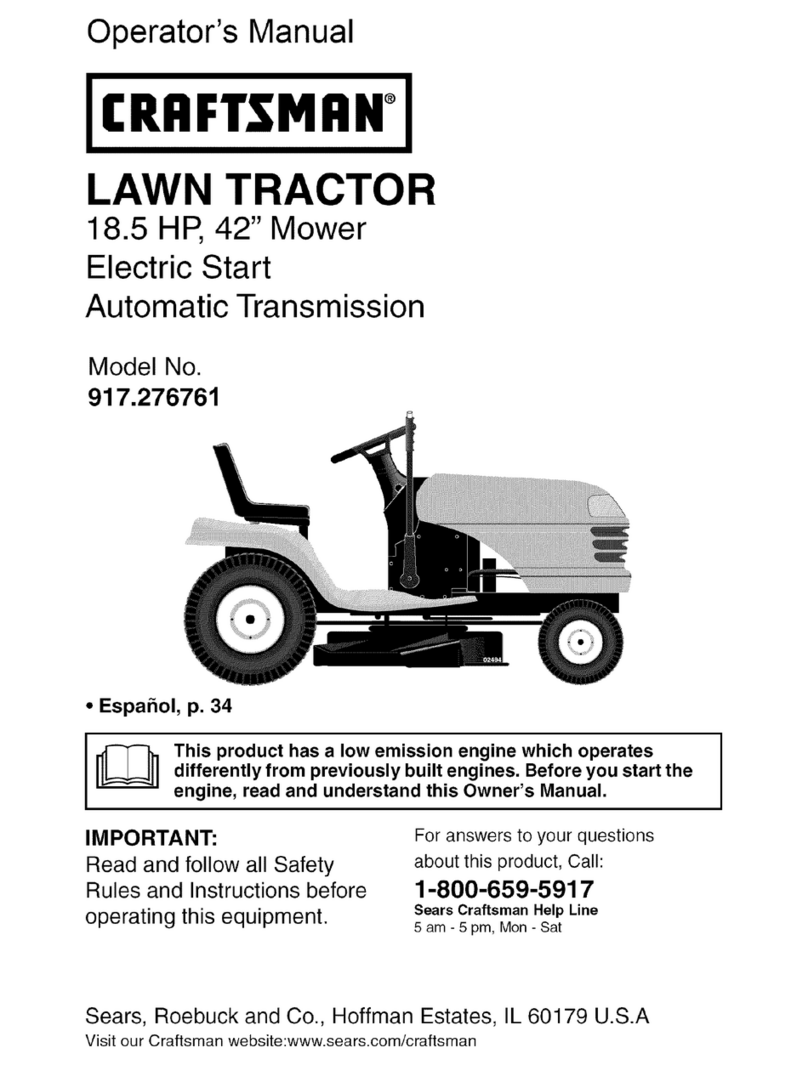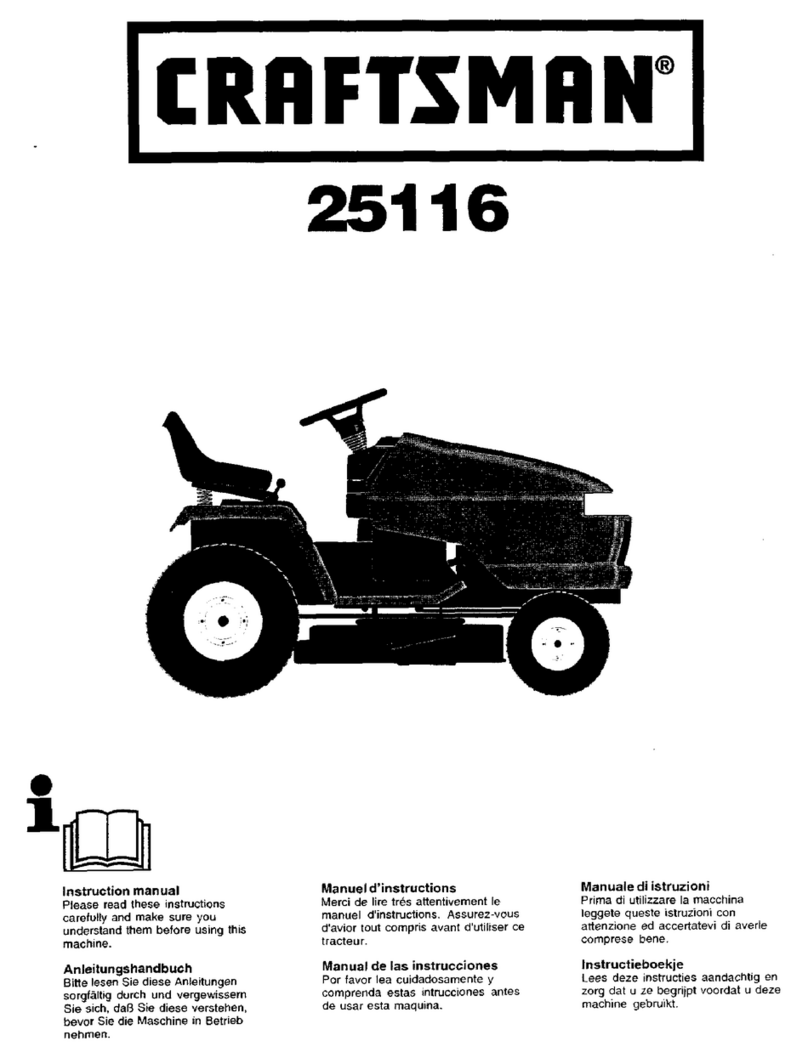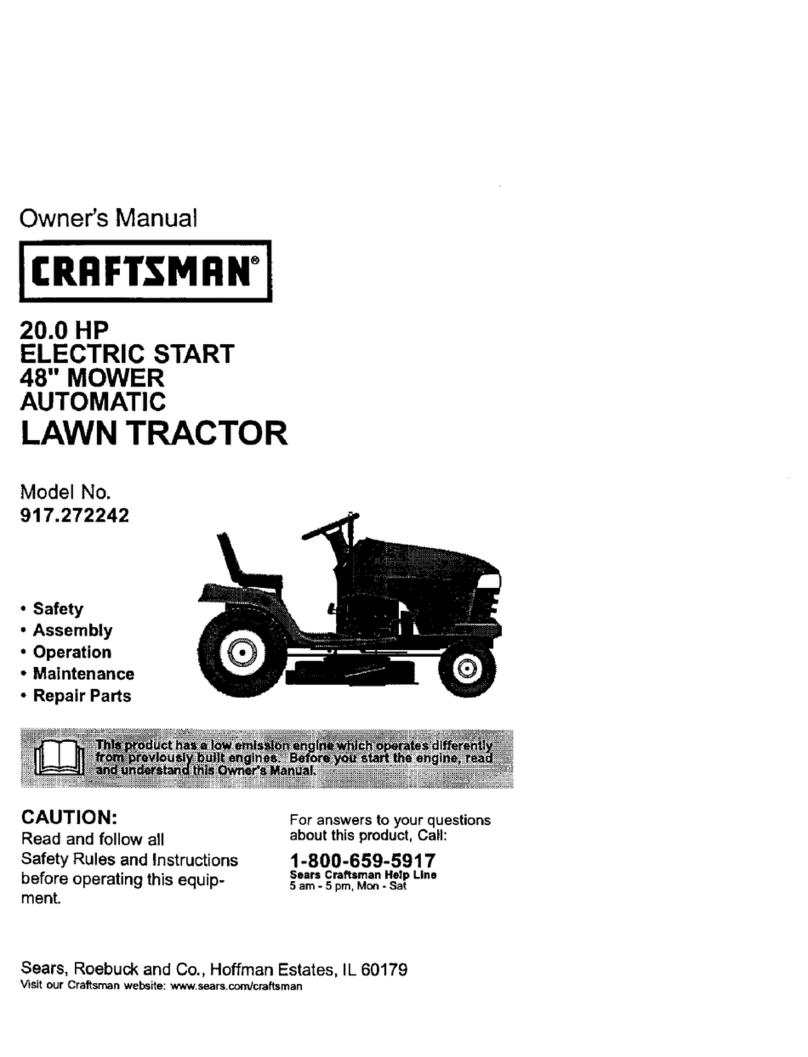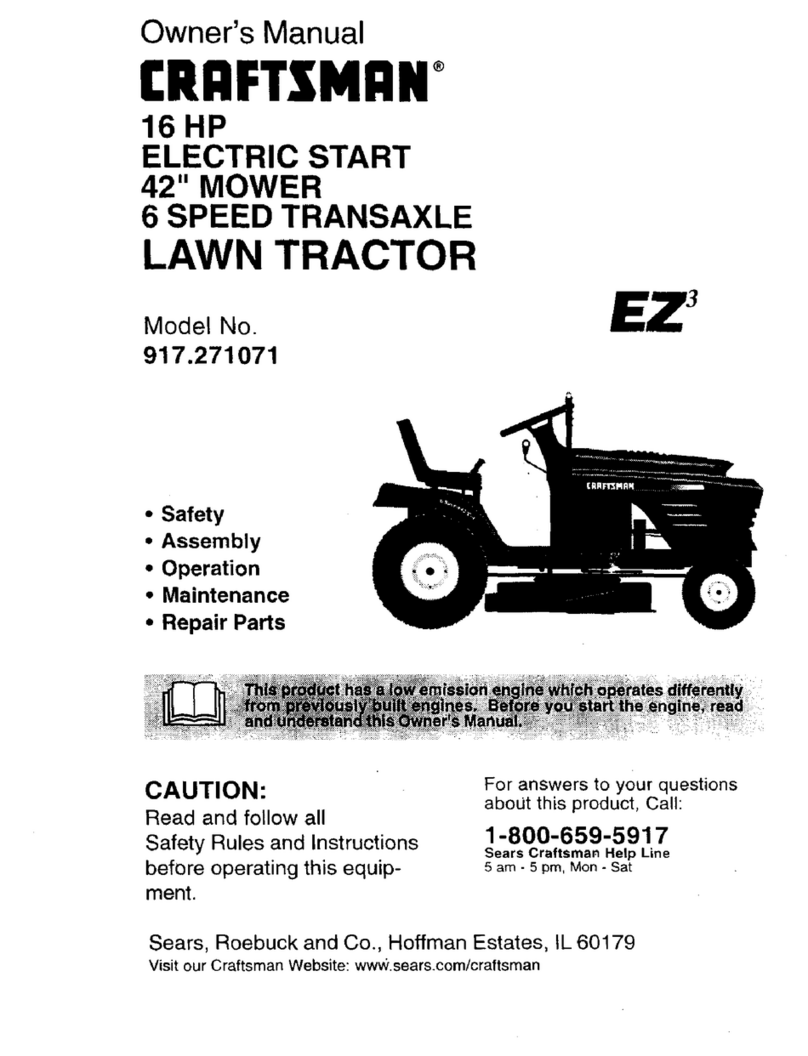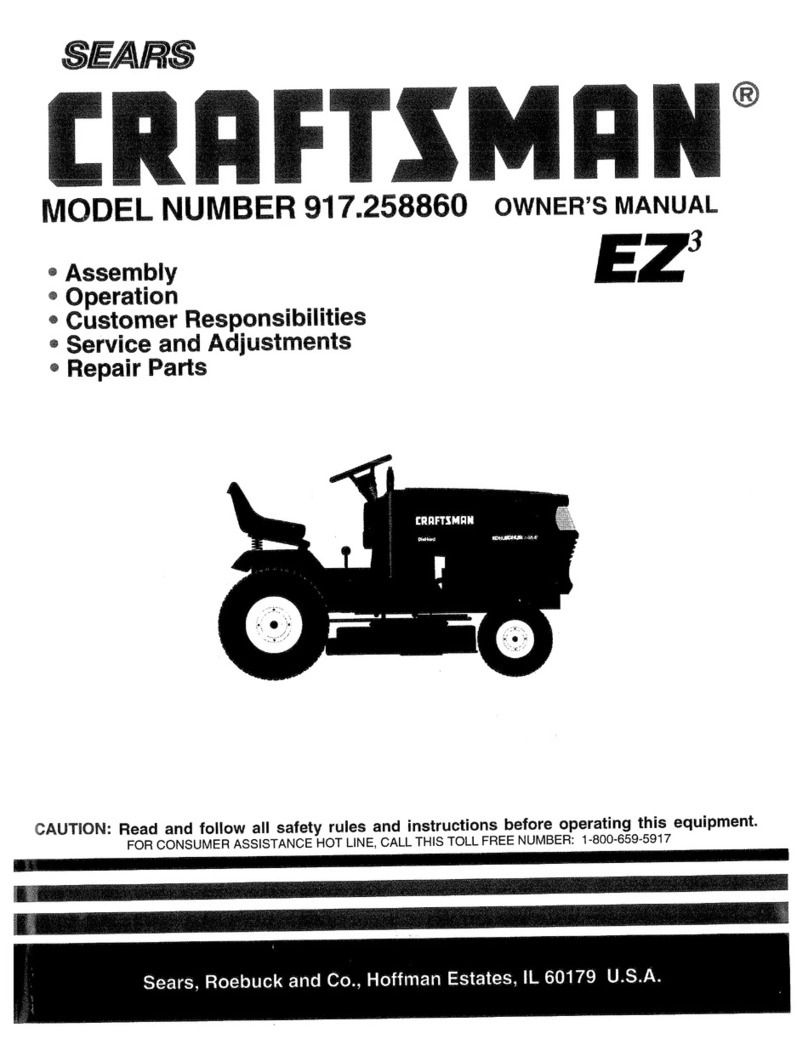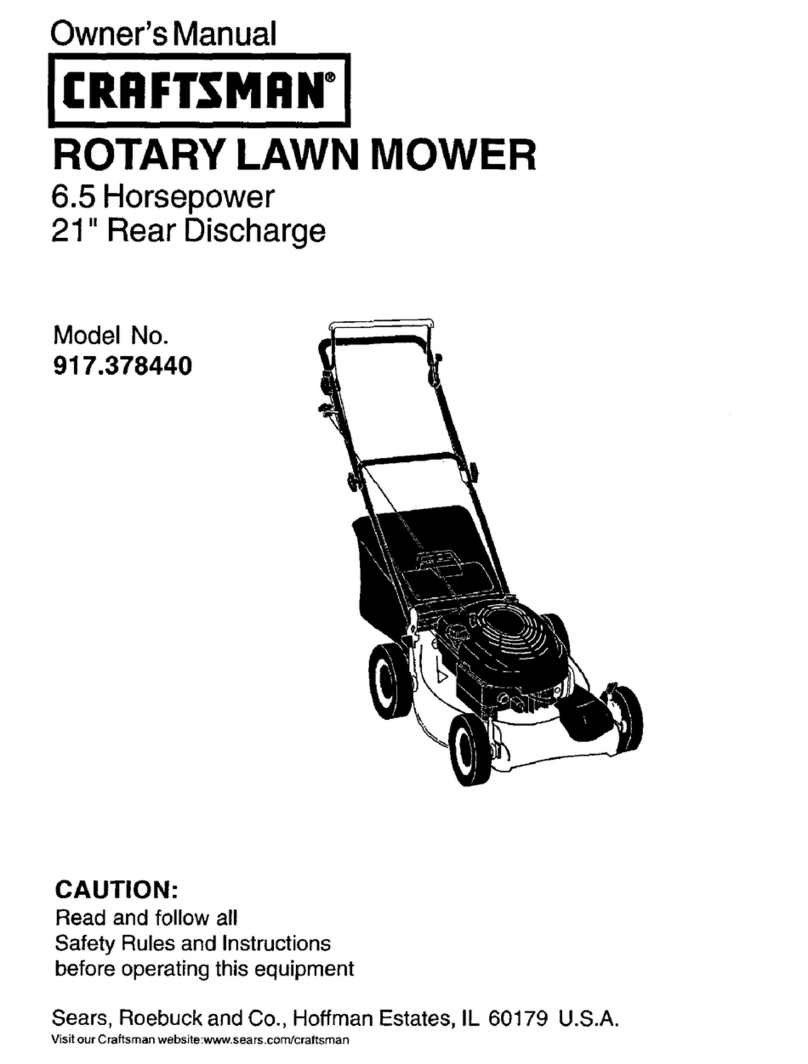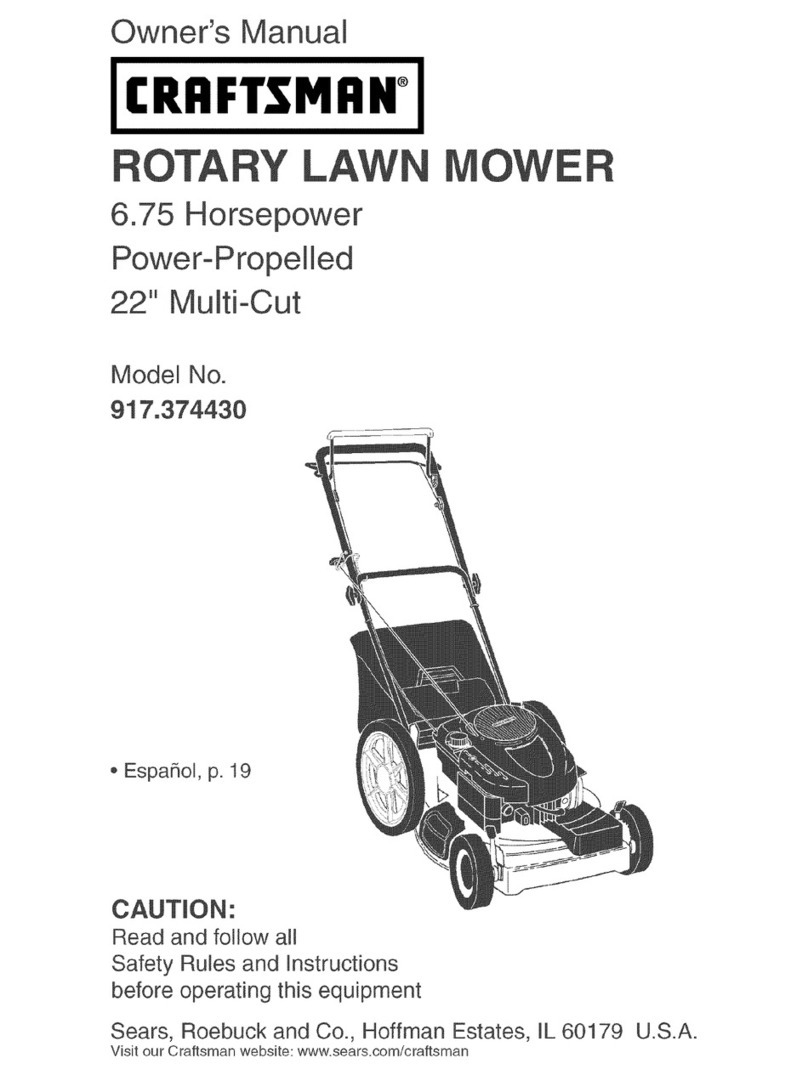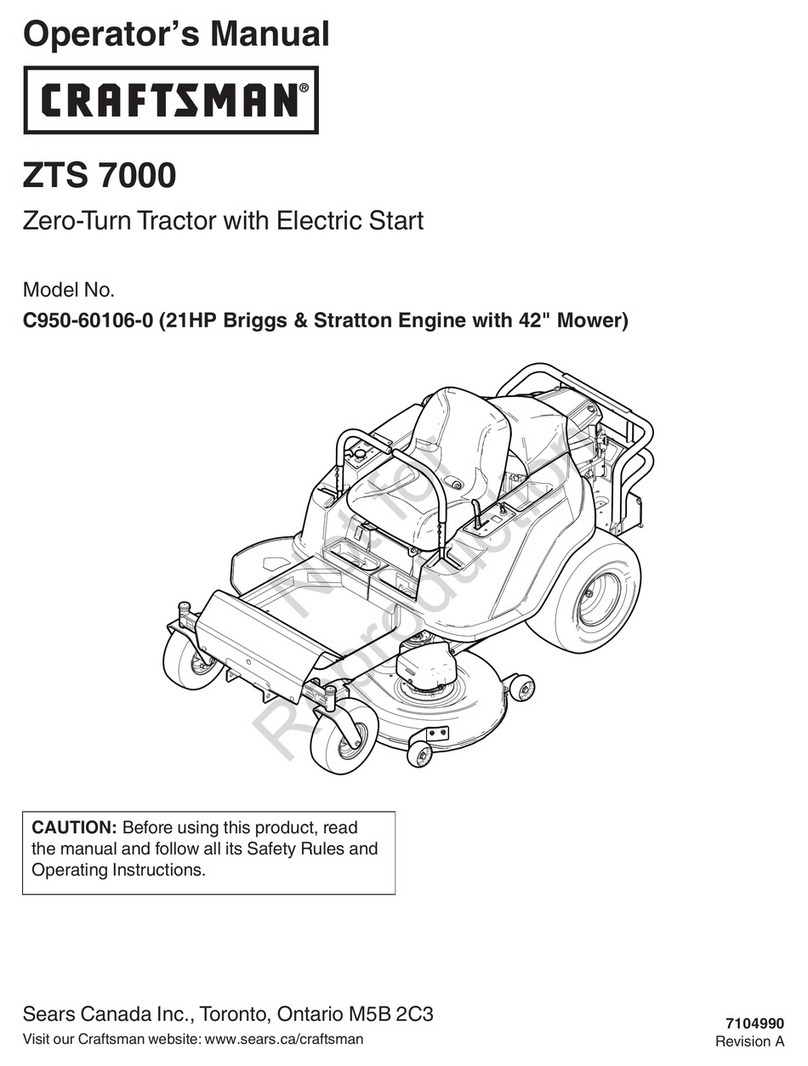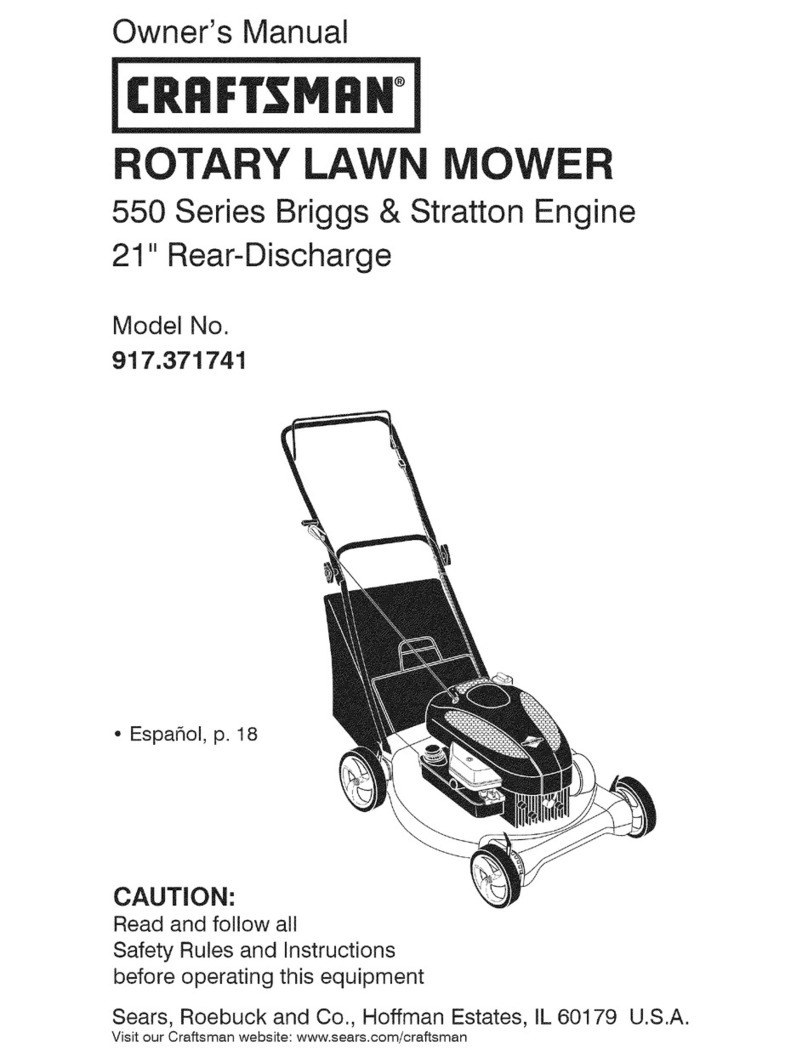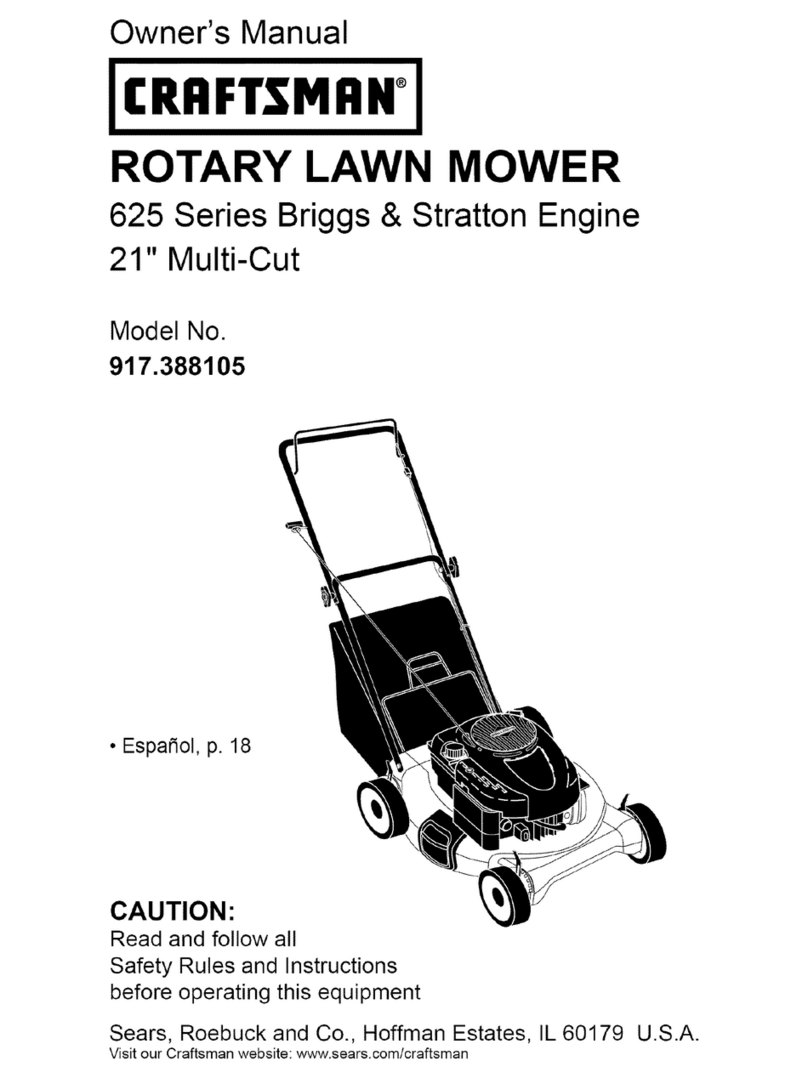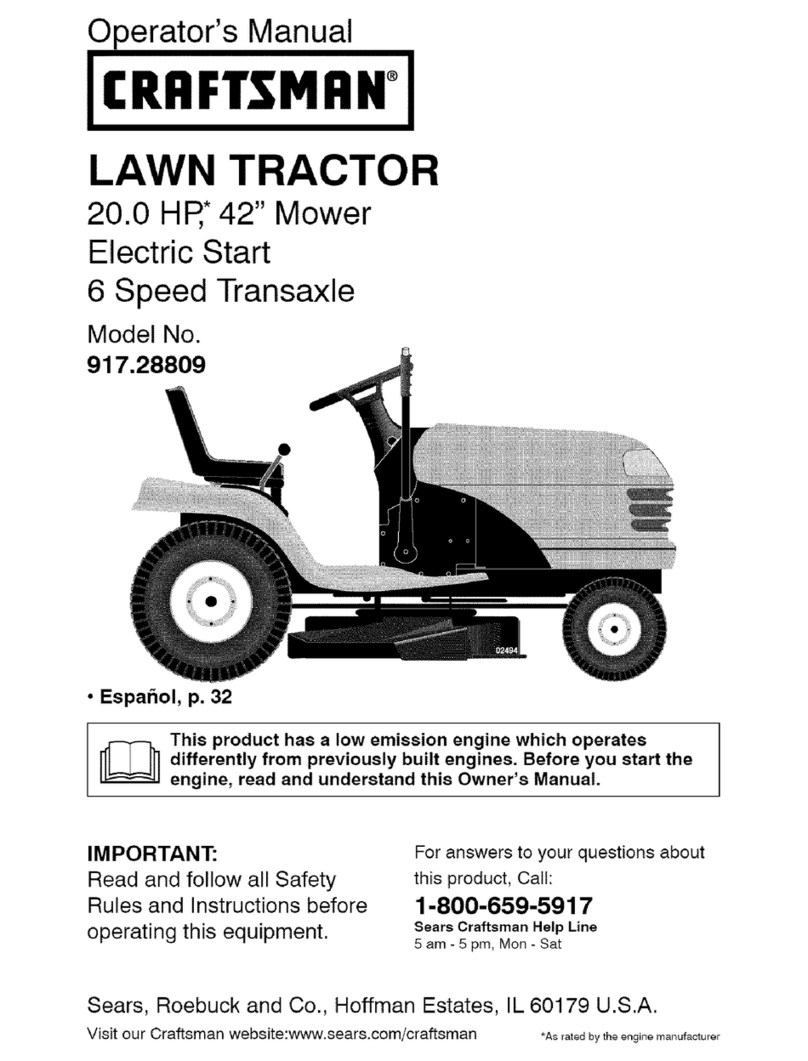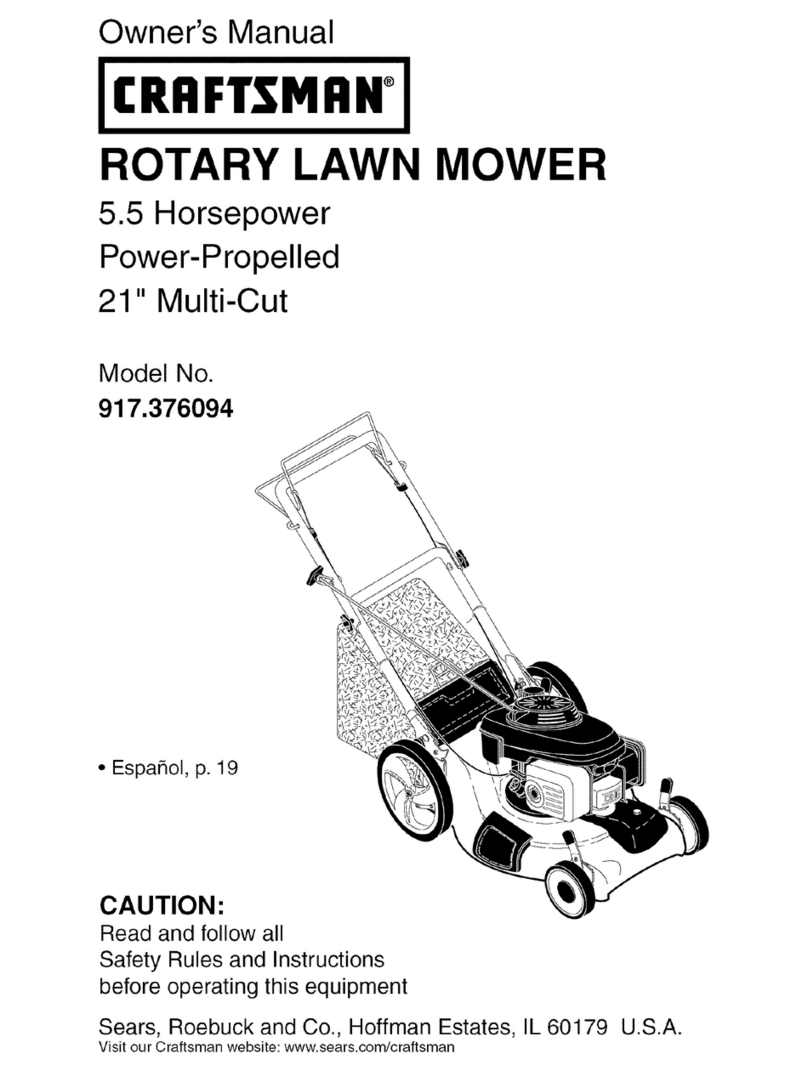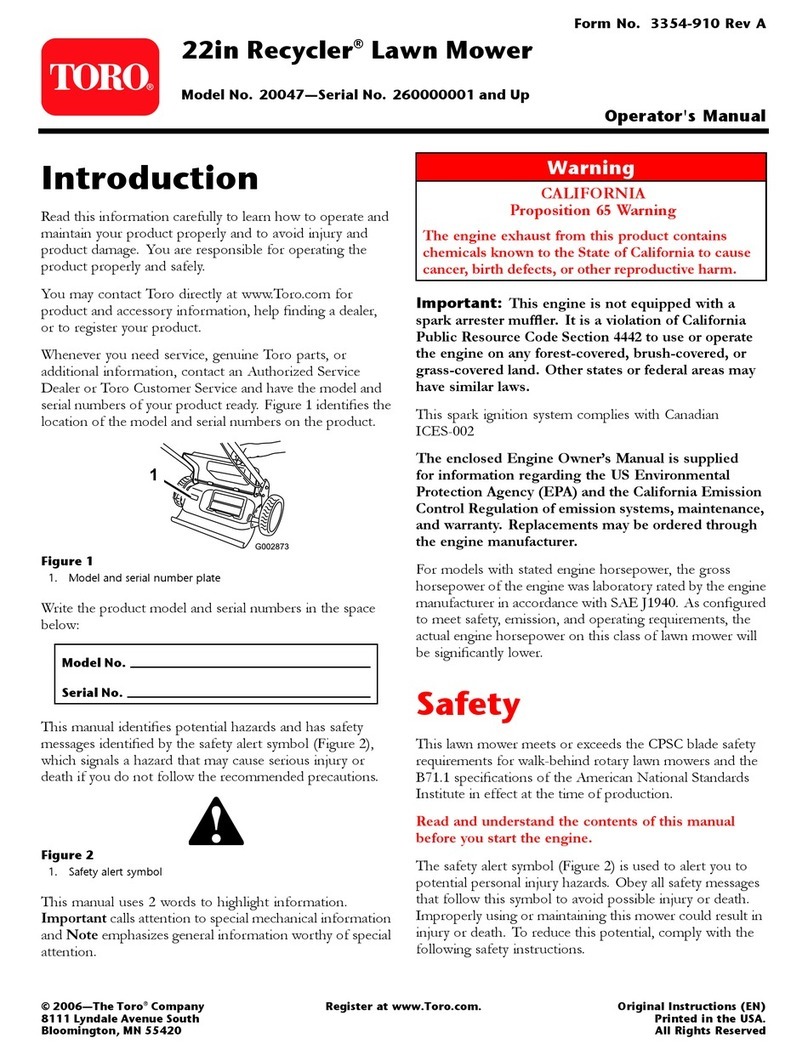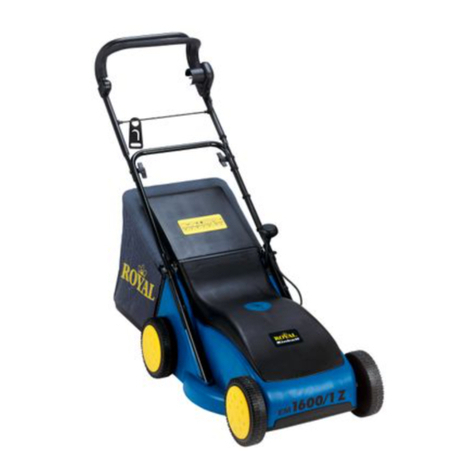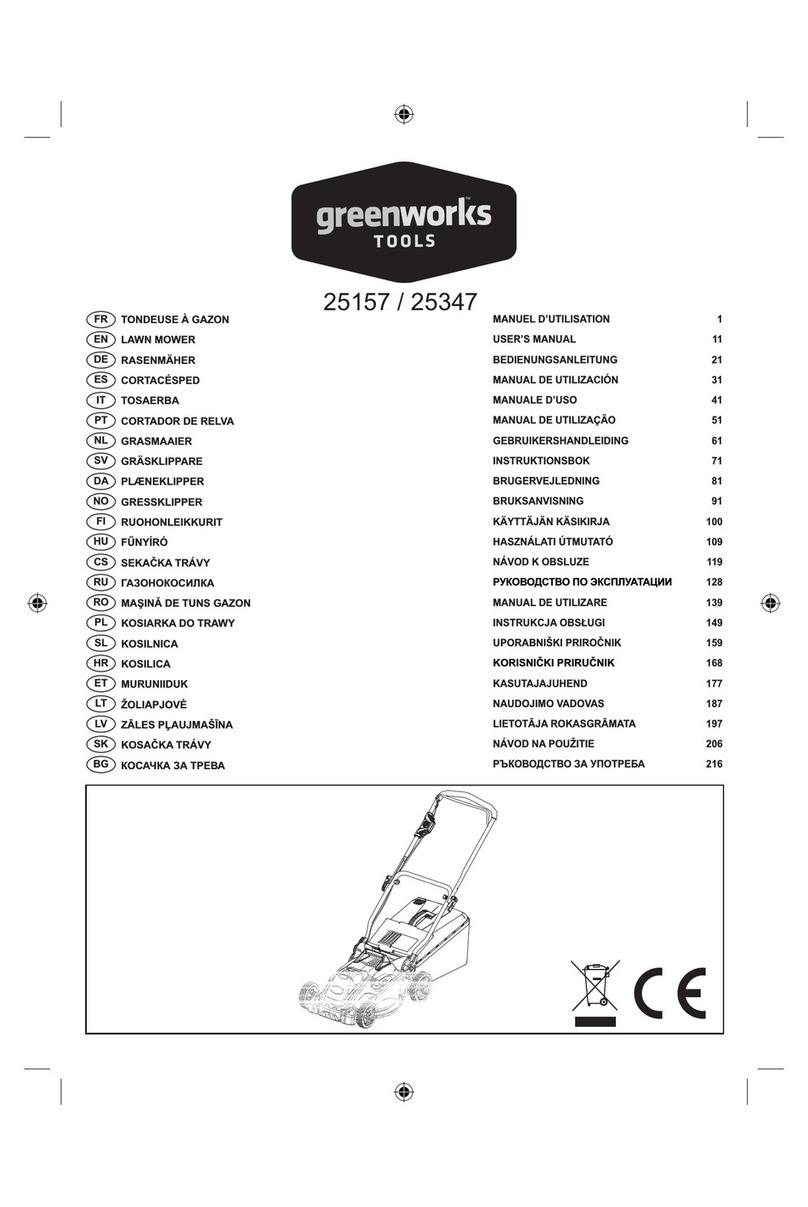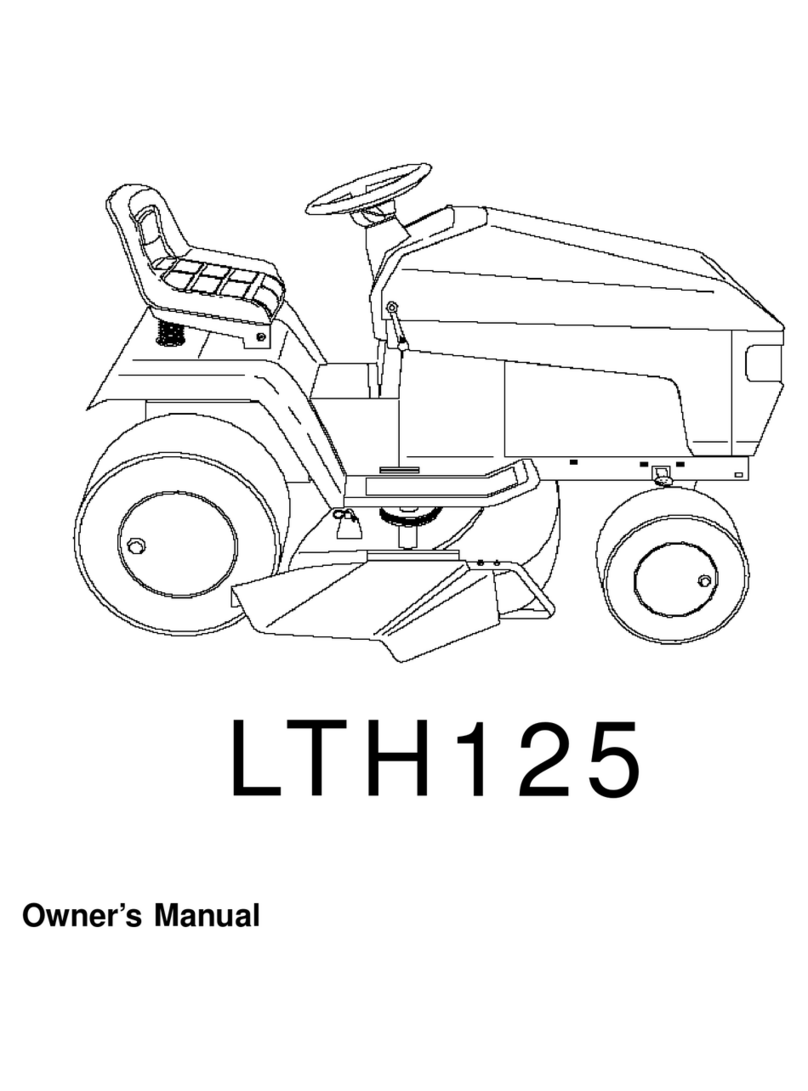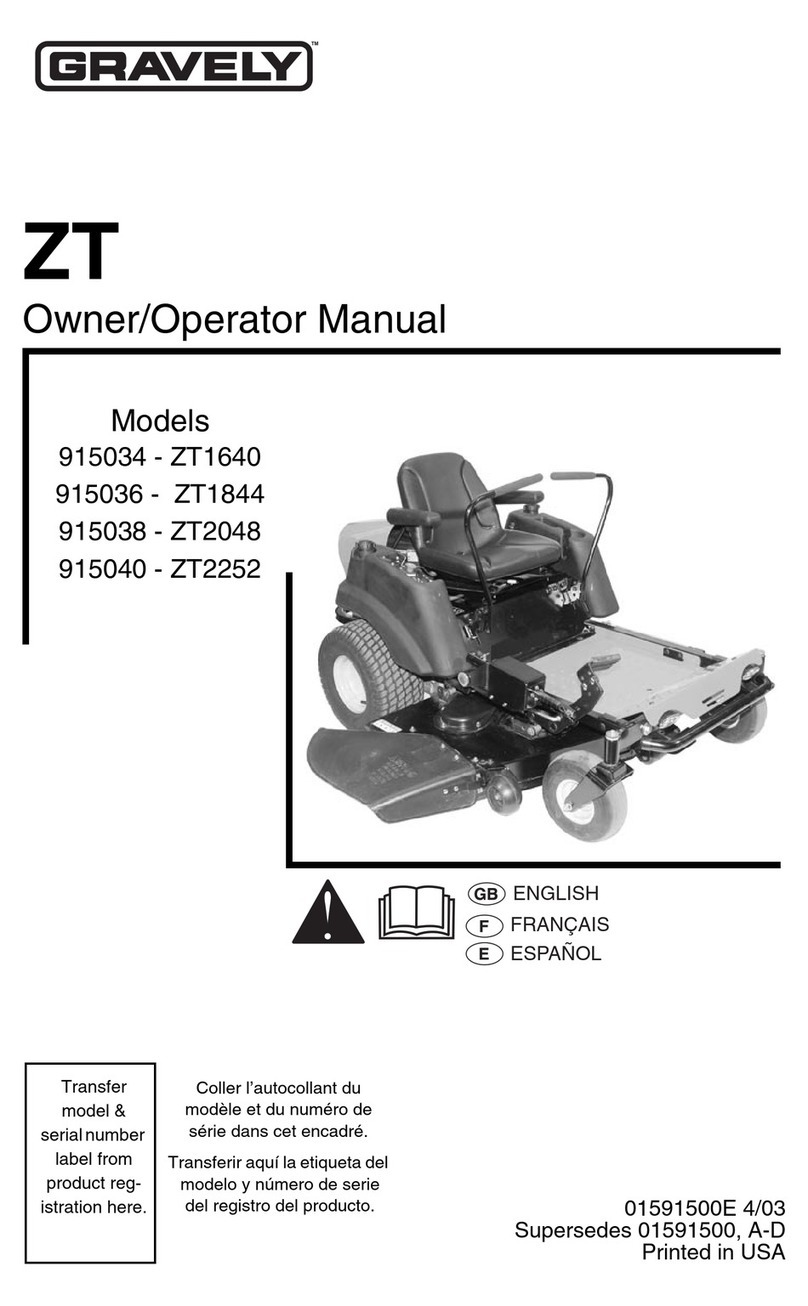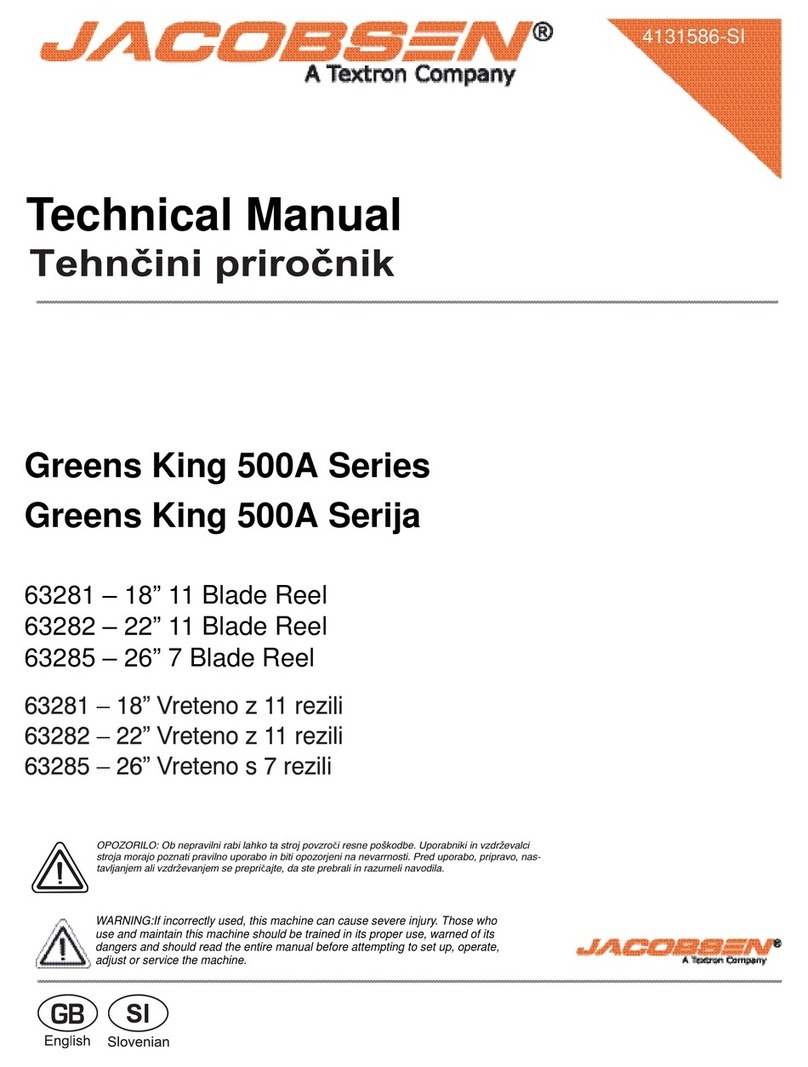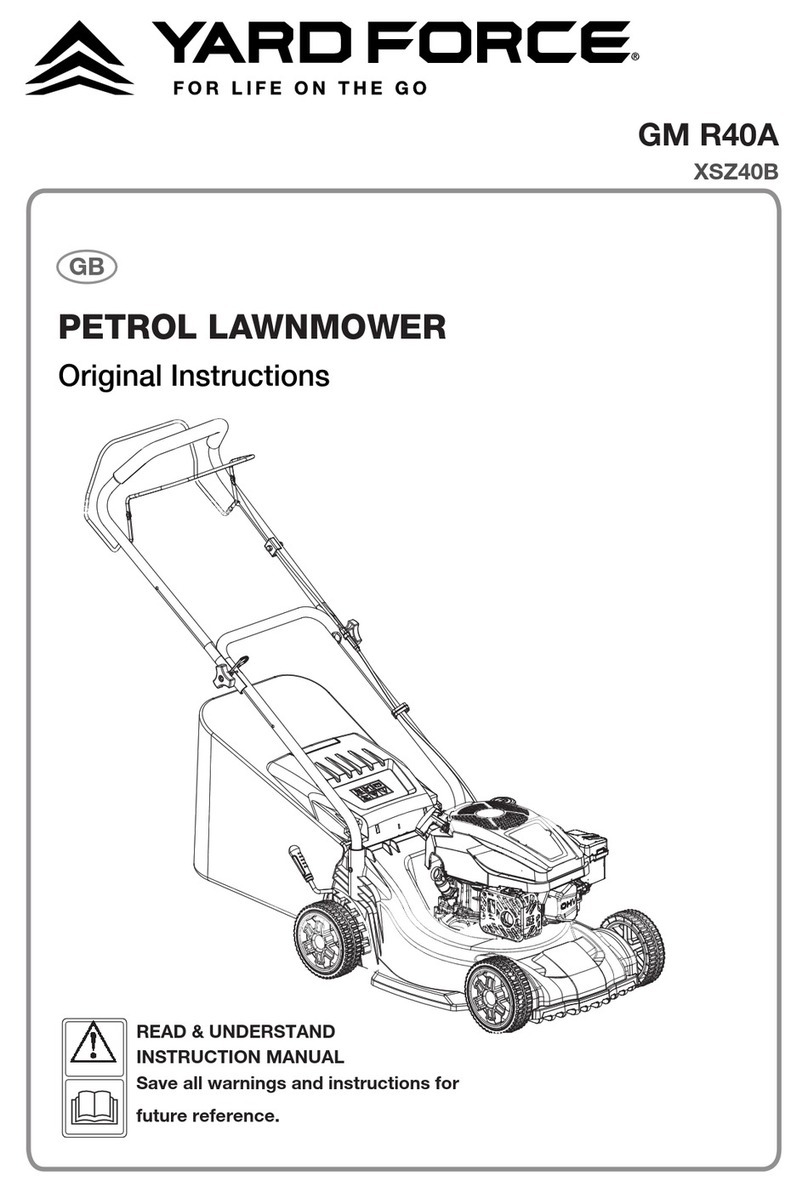IMPORTANT: This cuttng machine s capab e of amputating hands and feet and
throwingobjects. Failure to observe the foUowing safety instructionscould result in
serious iniury or death.
I. GENERAL OPERATION
•Read, understand, and loitow all
instructionsin the manual and on the
machine beforestarting.
•Only allow responsibleadults, who are
familiar withthe instructions,to operate
the machine.
•Clear the area ofobjectssuch as rocks,
toys, wire, etc., whichcould be picked
up and thrown by the blade.
•Be sure the area is clear of other people
before mowing. Stop machine if anyone
enters the area.
,_ Never carry passengers.
Do not mow in reverseunless absolutely
necessary. Always look down and
behind before and while backing.
•Be aware of the mower discharge
directionand do notpointit at anyone.
Do not operate the mower withouteither
the entire grass catcheror the guard in
place.
•Slow down before fuming.
• Never leave a runningmachine
unattended. Alwaysturn off blades, set
parkingbrake, stopengine, and remove
keys before dismounting.
•Turn off blades when not mowing.
•Stop engine before removing grass
catcher or uncloggingchute.
•Mow only in daylightor good artificial
light.
•Do not operate the machine while under
the influence of alcoholor drugs.
•Watch fortrafficwhen operatingnear or
crossing roadways.
•Use extra care when loading or unload-
ingthe machine into a trailer or truck.
•Data indicates that operators, age 60
years and above, are involved in a large
percentage of riding mower-related
injuries. These operators should
evaluate their abilityto operate the riding
mower safelyenough to protect them-
selves and others from seriousinjury.
• Keep machine free of grass, leaves or
other debds build-up which can touch
hot exhaust/engine pads and bum, Do
notallow the mower deck to plow leaves
or other debris whichcan cauSe build-
up to occur. Clean any oil or fuel
spillagebefore operating or storing the
machine. Allow machine to cool before
storage.
II. SLOPE OPERATION
Slopes are a major factor related to loss-of-
control and tipover accidents,which can re.
suit in severe injury or death. All slopes
require extra caution. If you cannotback up
the slope or if you feel uneasy on it, do not
mow it.
DO:
*Mow up and down slopes,not across.
Remove obstacles suchas recks, tree
limbs,etc.
Watch tot holes, ruts, or bumps. Uneven
terrain could overturn the machine. Taft
grass can hide obstack_s.
Use slowspeed. Choose a low gear so
thatyou will not have to stopor shift
while on the slope.
Follow the manufacturer's recommenda-
tions for wheel weightsor counter-
weightsto improvestability.
Use extracare withgrass catchers or
other attachments. These can change
the stability of the machine.
Keep all movement on the slopes slow
and gradual Do not make sudden
changes in speed or direction.
Avoid startingor stoppingon aslope, If
tires lose traction, disengage the blades
and proceed slowly straight clownthe
slope.
DO NOT:
•Do not turn on slopes unless eacessa_J,
and then, turn slowlyand gradually
downhill, if possible.
•Do notmow near drop-offs,ditches,or
embankments. The mower could
suddenly turnover if a wheef is over the
edge of a clifforditch, or if an edge
caves in,
•Do notmow on wet grass.Reduced
traction could cause sliding.
•Do not try to stabilizethe machine by
puttingyour foot on the ground.
•Do notuse grass catcher on steep
slopes.
3

